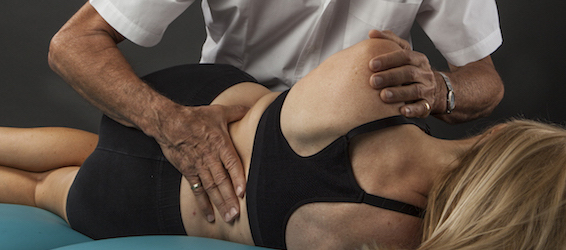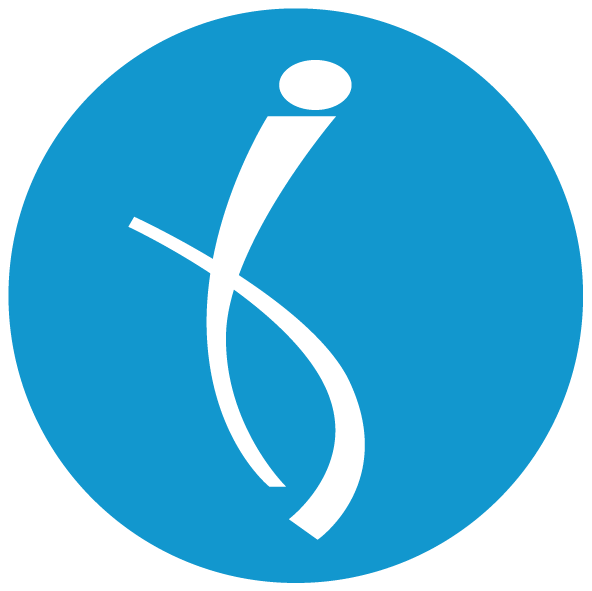
New Manual Articular Approach (MAA) was developed in clinical practice by world-renowned French Osteopath and Physical Therapist Jean-Pierre Barral. French Osteopath Alain Croibier collaborated with Jean-Pierre Barral to develop MAA. The courses are based on clinical techniques personally developed by Jean-Pierre Barral combined with Alain Croibier's scientific information.
"Articular" refers to the joints of the body, which are critical points of interconnectivity between all other structures within the body. Joints receive and emit messages with other parts of the body, and are also connected to our emotions. New Manual Articular Approach is a manual therapy modality that applies a comprehensive approach to the treatment of joints. It integrates all aspects of the joint including the nerve, artery, bone, capsule, and ligaments, as well as visceral and emotional connections. MAA delves into the joints like never before. It examines the nerves of each joint, along with the arteries, meniscus, ligaments, capsule attachments and folds. It incorporates soft tissue mobilization of the associated bones, while looking at direct and indirect relationships between the bones of the body. The relationship between the viscera and the joints is not widely understood. MAA shows how interconnected they are and that without addressing this visceral connection many joint issues may not fully resolve. The application of the gentle MAA techniques improves the body’s ability to heal and restore itself to optimal health.
MAA is a soft, hands-on manual therapy. Underneath the pain or diagnosis is a compensatory pattern created in the body with the initial source of the dysfunction often being far from where the pain is felt. A skilled MAA practitioner searches for this pattern and its source, evaluating the whole body and not just the problematic joint, and treats the related tissues. MAA treatment is comprised of precise gentle engagement and soft tissue mobilization of the associated bones, while looking at direct and indirect relationships between the bones of the body. As the source of a problem is released, symptoms will start to decrease. Reaction and response time can vary with each Manual Articular Approach treatment.
A joint is so much more complex than a place where bones come together. It is comprised of multiple components – including bone, cartilage, muscles, tendons, nerves, and fluid – that when functioning properly, allow the joint to glide smoothly and pain-free. If one component becomes problematic, the entire joint begins to compensate and not function properly. This leads to dysfunction ranging from temporary pain to longer term damage. All parts and systems within the body are interconnected – joints included – and when there is dysfunction in one place, other areas can be negatively impacted. A skilled MAA practitioner can properly assess the interactions of your joints with your body to help restore proper function.
A symptom – perhaps pain in a particular joint – is considered to be a piece of the puzzle within the context of an MAA therapist’s patient evaluation, but the symptom is not necessarily viewed initially as the most important element. The cause of a problem may actually be located somewhere other than where the symptoms appear to be present. Particularly with joint pain, symptoms can be referred pain from another part of the body.
Optimal health relies on a balanced relationship between the different systems of the body – such as the nerves/nervous system, organs (viscera) and their support tissues, bones, and other structures. An MAA therapist identifies the source of disharmony in the body, as well as how and why it is impacting a joint where the patient is feeling symptoms. Through application of the gentle and specific MAA techniques, the patient’s body overall becomes less bound by dysfunctional patterns, releasing the affected joint and ultimately allowing the body to achieve a state of optimal health.
HOW DID MANUAL ARTICULAR APPROACH BEGIN?
 Jean-Pierre Barral is an Osteopath and Registered Physical Therapist from France. He initially developed Visceral Manipulation, a manual therapy focusing on the internal organs of the body, which he began teaching in the United States in 1985. In addition, Jean-Pierre Barral and Alain Croibier, also an Osteopath from France, developed therapy techniques specific to the Nervous System, which lead to Neural Manipulation being taught in the United States beginning in 1999. Jean-Pierre Barral’s continued studies and clinical work, combines with Alain Croibier’s scientific information, led to the development, practice, and teaching of "Manual Articular Approach," focusing on joints of the body.
Jean-Pierre Barral is an Osteopath and Registered Physical Therapist from France. He initially developed Visceral Manipulation, a manual therapy focusing on the internal organs of the body, which he began teaching in the United States in 1985. In addition, Jean-Pierre Barral and Alain Croibier, also an Osteopath from France, developed therapy techniques specific to the Nervous System, which lead to Neural Manipulation being taught in the United States beginning in 1999. Jean-Pierre Barral’s continued studies and clinical work, combines with Alain Croibier’s scientific information, led to the development, practice, and teaching of "Manual Articular Approach," focusing on joints of the body.
Since then, they h ave trained a team of International Instructors that teach Visceral Manipulation, Neural Manipulation and Manual Articular Approach seminars around the world. They have also authored numerous textbooks for healthcare professionals, including Visceral Manipulation, Manual Therapy for the Peripheral Nerves, Manual Therapy for the Cranial Nerve, Visceral Vascular Manipulation. Jean-Pierre Barral has also authored a book for the general public, Understanding the Messages of Your Body, which discusses the important link between our organs, emotion and health.
ave trained a team of International Instructors that teach Visceral Manipulation, Neural Manipulation and Manual Articular Approach seminars around the world. They have also authored numerous textbooks for healthcare professionals, including Visceral Manipulation, Manual Therapy for the Peripheral Nerves, Manual Therapy for the Cranial Nerve, Visceral Vascular Manipulation. Jean-Pierre Barral has also authored a book for the general public, Understanding the Messages of Your Body, which discusses the important link between our organs, emotion and health.
MANUAL ARTICULAR APPROACH CAN BENEFIT:
Joint Pain, Limited Mobility, Joint Inflammation, Sprains, Tendinitis, Osteoarthrosis, Rotator Cuff Injuries, and more.



